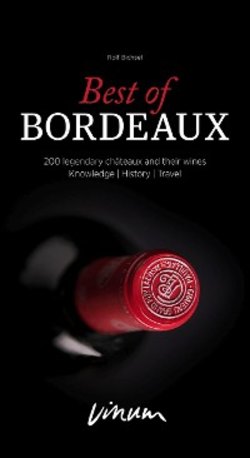Читать книгу Best of Bordeaux - Rolf Bichsel - Страница 45
Оглавление45
The Bordeaux-makers History
The Bordeaux makers
Well, first there are the North Africans. Although they do not drink great Bor-
deaux, they play a major role in producing it, for which they are paid a pittance.
They are also Muslims, which poses no problems, as the Bordelais have always
shared Old Fritz's view that everyone should be holy in their own way. Although
Bordeaux has always been Catholic, it has successfully traded with Israelites,
Protestants and Anglicans who had become the ultimate controllers of global
trade, and its vines are now cultivated by Muslims, particularly in the historic
left bank regions of Bordeaux, largely by (local) women. Despite the high unem-
ployment rate, your average Frenchman does not want to get his hands dirty
with hard vineyard labour. Men sit on tractors and drive full barrels through the
winery. Manual work such as foliage treatment, vine pruning, hoeing between
the canes where the machines cannot reach, and sorting has always been per-
formed by the wives, and the men are happy that way. ‘Petites façons' (‘small
work'), was what they called the work of female hands, namely breaking up the
soils between the vines with a pickaxe, whilst the men performed the ‘big work'
consisting of clattering proudly through the vines with a team of oxen and whis-
tling to the girls slaving away in the dirt below. Tribute should also be paid to all
of the female figures past and present who have accompanied their husbands
in the vineyard. They also play a leading role during the harvest, at the sorting
table, in the o
ffi
ce (who else ensures that orders are ful
fi
lled, samples are sent,
visitors are welcomed, coffee is brewed and thousands of other ‘minor details'
are taken care of?) and even at the head of the company or in the cellar: the Fac-
ulty of Oenology in Bordeaux now has more female students than male, which
is as it should be.
What makes Bordeaux so unique is the fact that production on an almost in-
dustrial scale began here in very early times. This made the division of labour
and specialisation essential, demanded a large amount of technical know-how,
and soon required its own oenological faculty: techniques such as sulphuring
barrels, injecting copper sulphate, modern pruning and organic lactic acid deg-
radation were discovered, studied or further developed in Bordeaux, in recent
years by researchers and in earlier eras by experienced directors of well-known
estates and a host of nameless vineyard workers and cellar masters – the collec-
tive memory of Bordeaux winemaking covers centuries. Estates are and were
expansive – by the 18th century Léoville already had 200 hectares of vines, and
the six Premiers Crus on the left bank together produce a million bottles a year.
If an estate owner proudly explains to an awed visitor the tricks he has used
to get the latest vintage to the wine press but then cannot find the light switch
on the tour, and praises the beauty of his neighbour's vineyards whilst visiting
the terraces, there is no need for concern, as he is being watched at a distance
by the backstage crew, all competent, knowledgeable and just happy that the
